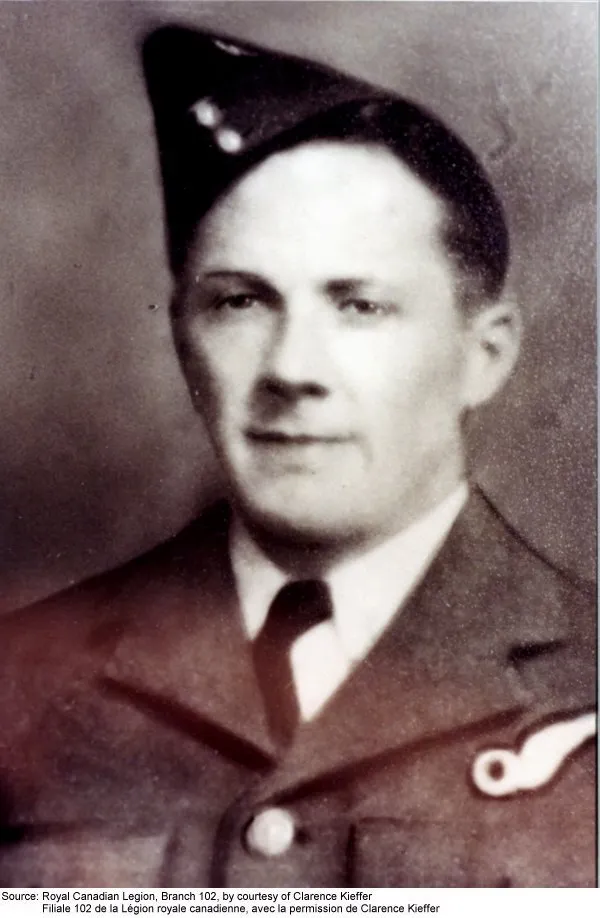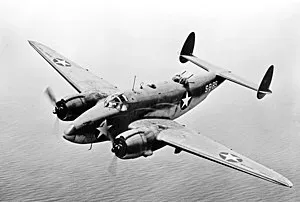Kirstine, Lloyd (Warrant Officer 2nd Class)
Killed in Action 1943-June-12


Birth Date: 1913
Born:
Parents: Son of Sebastian and Mary J. Kirstine, of Walkerton, Ontario.
Spouse:
Home: Walkerton, Ontario
Enlistment:
Enlistment Date: unkown date
Service
RCAF
Unit
487 Sqn- Squadron (RNZAF)
Ki Te Mutunga Through to the end
Base
Rank
Warrant Officer 2nd Class
Position
Navigator
Service Numbers
R/90782
Home
Mission
Ventura Mk. I AE833
Combat 1943-June-12 to 1943-June-12
487 (B) Sqn (RNZAF)
487 New Zealand Squadron (Ki Te Mutunga). Ventura aircraft AE 833 was shot up by flak during the trip and returned to land at the aerodrome at Tangmere, England.Warrant Officer Kirstine was wounded in the attack and died of his wounds in the Royal Sussex Hospital, Chichester, shortly after landing.Ventura serial: AE833

A Lockheed PV-1 Ventura
The Lockheed Ventura is a twin-engine medium bomber and patrol bomber of World War II.
The Ventura first entered combat in Europe as a bomber with the RAF in late 1942. Designated PV-1 by the United States Navy (US Navy), it entered combat in 1943 in the Pacific. The bomber was also used by the United States Army Air Forces (USAAF), which designated it the Lockheed B-34 (Lexington) and B-37 as a trainer. British Commonwealth forces also used it in several guises, including antishipping and antisubmarine search and attack.
The Ventura was developed from the Lockheed Model 18 Lodestar transport, as a replacement for the Lockheed Hudson bombers then in service with the Royal Air Force. Used in daylight attacks against occupied Europe, they proved to have weaknesses and were removed from bomber duty and some used for patrols by Coastal Command.
At the start of the war, Lockheed proposed military conversions of the Lodestar for the RAF as replacement for the Hudson reconnaissance aircraft and the Bristol Blenheim bomber. The first British order was placed in February 1940 for 25 Model 32 as bombers. This was followed by an order for 300 Model 37 with Double Wasp engines, then for a further 375 later in 1940. Lockheed needed more production capacity and nearby Vega Aircraft Corporation was contracted for building the Ventura.
The Ventura was very similar to its predecessor, the Lockheed Hudson. The primary difference was not in layout; rather, the Ventura was larger, heavier, and used more powerful engines than the Hudson. The RAF ordered 188 Venturas in February 1940, which were delivered from mid-1942. Venturas were initially used for daylight raids on occupied Europe but, like some other RAF bombers, they proved too vulnerable without fighter escort, which was difficult to provide for long-range missions. Venturas were replaced by the faster de Havilland Mosquito. The Venturas were transferred to patrol duties with Coastal Command as the Mosquito replaced them in bomber squadrons; 30 went to the Royal Canadian Air Force (RCAF) and some to the South African Air Force (SAAF). The RAF placed an order for 487 Ventura Mark IIs but many of these were diverted to the USAAF, which placed its own order for 200 Ventura Mark IIA as the B-34 Lexington, later renamed RB-34.
A total of 157 Ventura G.R. Mk. Vs were used operationally by the RCAF from 16 June 1942 to 18 April 1947 in the home defence coastal patrol role in both Eastern and Western Air Command. They were flown by 8, 113, 115, 145, and 149 Squadrons. A further 21 Ventura Mk. Is and 108 Ventura Mk. IIs were used in a training role at 1 Central Flying School, Trenton, Ontario, and at RCAF Station Pennfield Ridge, New Brunswick (RAF No. 34 Operational Training Unit) as part of the BCATP. A total of 21 Mk. Is, 108 Mk. IIs, and 157 G.R. Mk. Vs were in service during this period for a total of 286 aircraft. Wikipedia